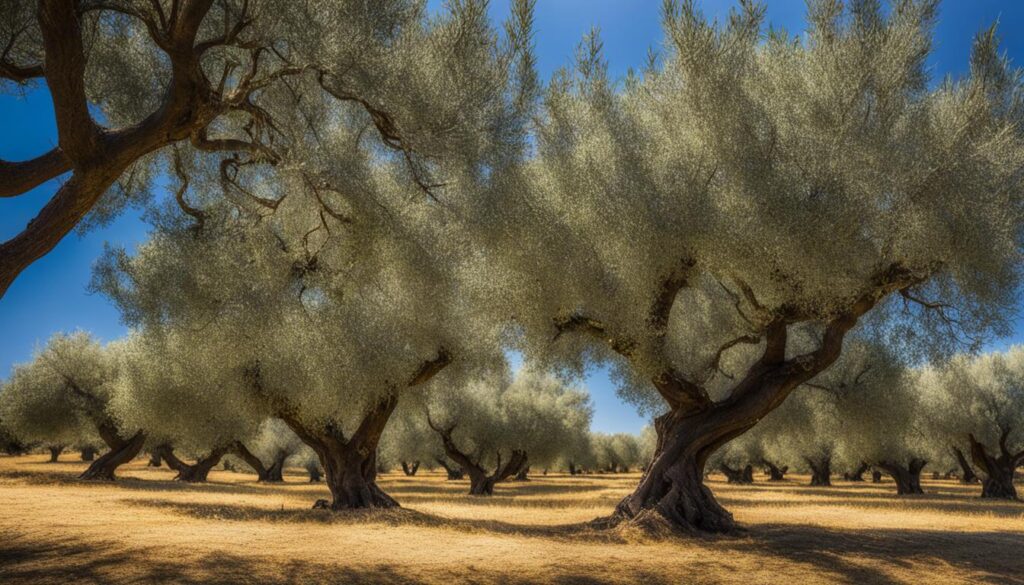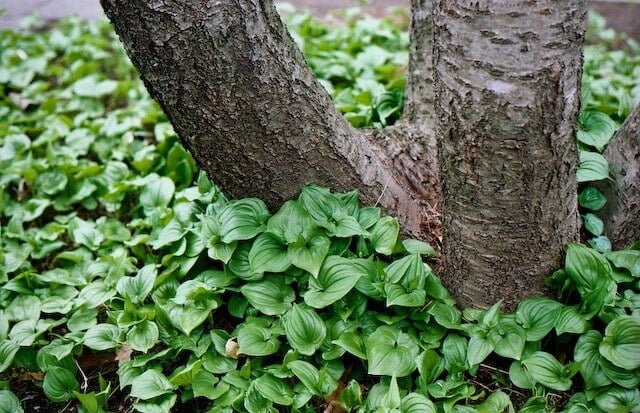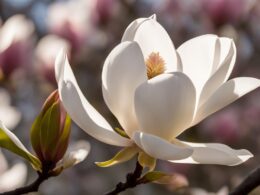Are you tired of your landscape losing its vibrant colors and becoming dull every fall? If you want to maintain year-round color and ensure a visually appealing landscape, consider incorporating trees that retain their leaves. These evergreen trees are nature’s way of providing constant greenery, even during the coldest months.
Evergreen trees are a great addition to any landscape, as they offer the perfect solution for those who desire a vibrant and lively outdoor space throughout the year. These trees are known for their ability to keep their foliage intact, providing a consistent source of color and texture.
Imagine a landscape with lush green trees, even in the midst of winter. Evergreen trees create a stunning backdrop that will captivate your senses and create a soothing ambiance. Whether it’s the elegance of magnolia trees, the practicality of olive trees, the festiveness of holly trees, or the tropical vibes of palm trees, there are endless options to choose from.
Incorporating evergreen trees into your landscape not only enhances its beauty but also provides numerous benefits. These trees contribute to the ecological balance by reducing soil erosion, improving air quality, and providing shelter for wildlife. Additionally, they require less maintenance compared to their deciduous counterparts.
Don’t settle for a dull landscape that only comes alive for a few months of the year. Embrace the beauty and allure of evergreen trees to create a landscape with year-round color. Explore the various options available and transform your outdoor space into a breathtaking haven that will be the envy of the neighborhood.
Reasons Why Some Trees Retain Leaves
Some trees, such as oaks, hornbeams, and beech trees, exhibit a fascinating phenomenon called marcescence, where they hold onto their brown, dead leaves throughout the winter. The presence of marcescent leaves can be attributed to various reasons, providing valuable benefits to the tree and the ecosystem.
- Protective Layer for Buds: The dried leaves that persist on these trees may serve as a protective layer for the buds, shielding them from harsh winter elements and potential browsing animals. By retaining these leaves, the tree ensures the buds’ safety and enhances its ability to produce new growth in the following spring.
- Nutrient Recycling: The presence of marcescent leaves contributes to nutrient cycling within the ecosystem. As the dead leaves slowly decay, they release valuable nutrients back into the soil. This nutrient recycling process enriches the soil, providing essential nourishment for the tree and other plants, while also promoting a healthy, balanced ecosystem.
- Wildlife Habitat: The foliage of marcescent trees provides valuable shelter for wintering birds and other wildlife. The persistently held leaves create small alcoves, offering protection from the elements and potential predators. These trees become crucial wildlife habitats, creating a refuge for various species during the winter months.
To visually understand marcescent leaves, take a look at the image below:
Marcescent leaves not only add visual interest and intrigue to the winter landscape but also have important ecological functions. From providing protective layers to supporting nutrient recycling and serving as wildlife habitats, these remarkable trees play an essential role in the health and sustainability of ecosystems.
Examples of Trees That Don’t Lose Their Leaves
There are various types of evergreen trees that retain their foliage throughout the year, adding beauty and aesthetic appeal to landscapes. Some notable examples include:
- Magnolia trees: These trees are known for their elegant blossoms and glossy leaves. The Magnolia grandiflora, commonly known as the southern magnolia, features large, fragrant flowers and dark green, waxy leaves that provide a stunning backdrop in any garden.
- Olive trees: With their silver-green leaves, olive trees not only bring a touch of Mediterranean charm but also provide practical benefits with their iconic fruits. Olives, prized for their oil and culinary uses, grow on the branches of these evergreen trees.
- Holly trees: Recognized for their festiveness, holly trees are a staple during the holiday season. These trees feature spiky green leaves and vibrant red berries, adding a cheerful touch to any landscape. The American holly (Ilex opaca) is a popular choice for its classic beauty.
- Palm trees: Evoking tropical vibes, palm trees are synonymous with paradise. Their iconic fronds create a sense of relaxation and tranquility. From the towering coconut palm (Cocos nucifera) to the graceful date palm (Phoenix dactylifera), these trees bring a taste of the tropics wherever they’re planted.
These examples showcase the diversity of evergreen trees, allowing you to choose the perfect addition for your landscape. Whether you prefer the elegant magnolia, the practical olive, the festive holly, or the tropical palm, these trees offer year-round beauty and greenery.
Take a moment to visualize the harmonious blend of colors and textures that these evergreen trees can bring to your outdoor space. To inspire you further, here’s an image of a magnificent olive tree:
In Summary
Magnolia trees, olive trees, holly trees, and palm trees are just a few examples of evergreen trees that retain their leaves throughout the year. These trees not only add aesthetic appeal to your landscape but also contribute to the ecological balance. With their unique features and enduring allure, they make a captivating addition to any outdoor setting. Consider incorporating these evergreen varieties into your landscape design to enjoy their year-round beauty.
Conclusion
Evergreen trees are not only aesthetically pleasing but also essential for maintaining the beauty and ecological balance of our landscapes. These trees provide year-round color, texture, and visual appeal, creating a vibrant and inviting environment.
Preserving and caring for evergreen trees is of utmost importance. Whether it’s nurturing their growth or addressing potential issues, expert tree care services play a crucial role in ensuring the health and longevity of these magnificent specimens.
For top-quality tree care services, consider reaching out to professionals who specialize in tree care, such as Strobert Tree Services. With their knowledge, experience, and commitment to tree health, they can provide the care and guidance needed to maintain the beauty and vitality of your evergreen trees.
Embrace the enduring allure of evergreen trees and transform your landscape into a year-round oasis of natural beauty. Let the vivid hues of these magnificent trees inspire you as you create a sanctuary that captivates and rejuvenates.
Are Redbud Trees a Type of Tree That Doesn’t Lose Its Leaves?
Yes, types of redbud trees are deciduous, meaning they do lose their leaves in the fall. However, they are known for their beautiful pink or purple flowers in the spring before they leaf out, making them a favorite for many gardeners.










